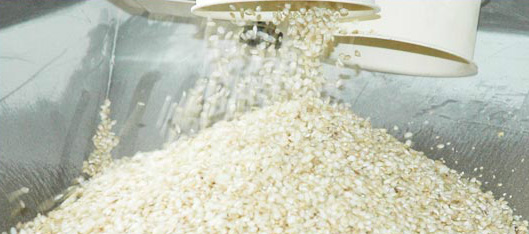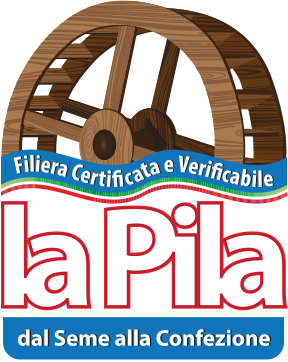The traceability chain process
[easyrotator]erc_32_1381944482[/easyrotator]
The term “food chain” was coined by LouisMalassis (1918-2007), the great Frencheconomist rural.
For agro–food chain it define “the sum of agents that act directly or indirectly throughout the cycle of a food product from the initial stage of production to the end user”, then the “network” covering the main activities (with flows of materials and of any information related thereto), technologies, resources, and organizations of people that contribute to the creation, processing, distribution, marketing and delivery of a finished product, in this case rice.
This is what differentiates the rice mill LaPila from the plethora of companies that they buy paddy rice to work it and package it, that pack it only or sell to market finished products supplied by others.
The approximately 600 hectares of rice fields of farms which met who have given birth to the rice mill LaPila are followed by the latter that track every aspect: from the seeds used for planting, the different stages of growth until harvest of the paddy rice to arrive then, at the drying, at the storage, at the husking, at the packaging and, finally, at the delivery to the structures of modern trade and of the traditional retail, where consumers will buy the product, or catering of high quality.
No external contamination is possible because we handle every step and know the whole story of our rice, history that is certified by an important control body as “Certiquality”. For this we are proud to offer consumers of certified products, guaranteed, safe and high quality, aware of how difficult it is to culture on a basic product such as rice that so many ignore the peculiarities of each variety. A road is not easy that we began to draw in 1987, but his passion for the work that motivates us for nearly thirty years and helps us overcome all difficulties.
The cultivation
Early spring we preparing the ground where the rice will be seeded. Our rice comes from certified seeds carefully selected. The seed bed must be level so that the water can flood the paddy field in a uniform manner. Then we proceed to the fertilization, plowing and fill the paddy with resurgence water so that the seeds are completely submerged. After a few days the water is removed so that the seedling will stick well to the earth. Floods and dry in succession accompany the different stages of plant growth of rice. In late summer the plant the rice reaches its maximum height, from here begins the stage of maturation. Towards the end of August the rice ears appear swollen and golden and reach the right maturity at the end of September. Very important is the choice of the moment for the collection, in fact, an early threshing or late can result in the presence of imperfect grains: or too green or broken. At the early of autumn begins the harvest and husking of the paddy rice. The rough rice is dried and transferred into the silos to be worked.
The processing
The processing of the Rice produced by the rice mill “la Pila” is made with technologically advanced equipment and the collaboration of highly qualified agricultural technicians. The rice arrives to consumers without having undergone any chemical treatment and no manipulation. The paddy rice (raw rice) is dried in hot air colums, and before being packaged it must be below the 14% moisture. The grains after having been released from the outer layers are bleached by means of a mechanical process of rubbing simple and traditional. The rice is controlled by an a optical sorter of last generation to separate the grains from impurities and by defective beans. At this point the rice of the rice mill “la Pila” is ready to be put in the bags with protective atmosphere or tiles vacuum and be presented to consumers. is made with technologically advanced equipment and the collaboration of highly qualified agricultural technicians. The rice arrives to consumers without having undergone any chemical treatment and no manipulation. The Paddy rice (Rice Raw) is dried in hot air colums, and before being packaged it must be below the 14% moisture. The grains after having been released from the outer layers are bleached by means of a mechanical process of rubbing simple and traditional. The rice is controlled by an a optical sorter of last generation to separate the grains from impurities and by defective beans. At this point the rice of the rice mill LaPila is ready to be put in the bags with protective atmosphere or tiles vacuum and be presented to consumers.
